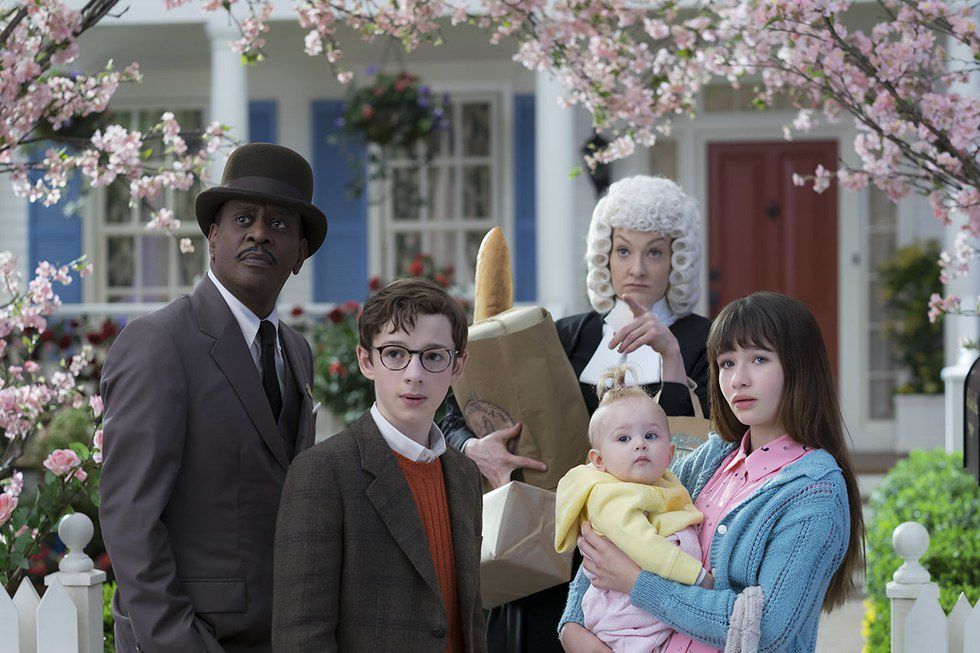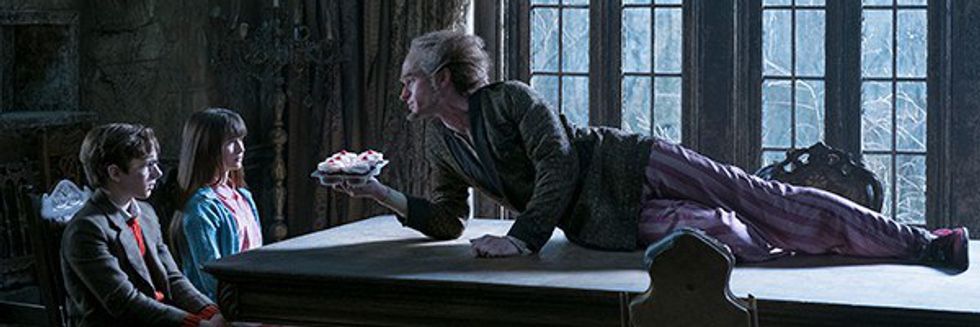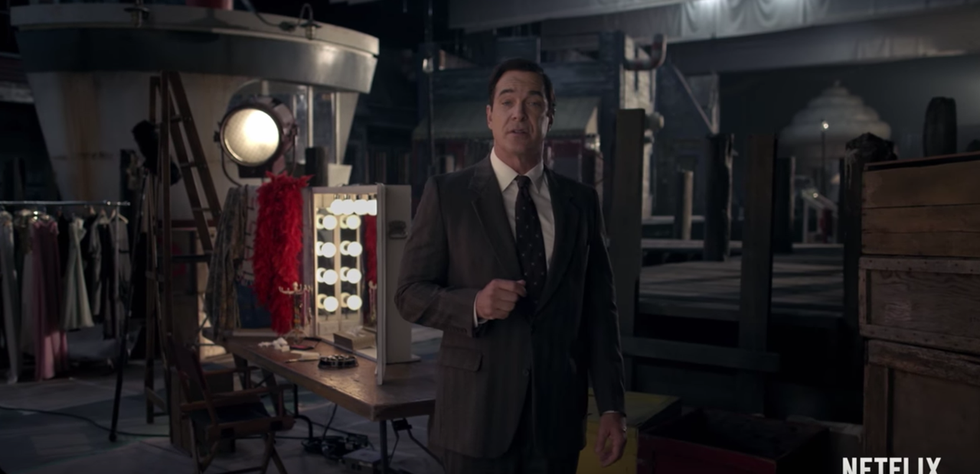Finally, the long anticipated Netflix original production of “A Series of Unfortunate Events” has premiered, very strategically on Friday the 13th. This review will be devoid of spoilers, so no worries, and be more of an overview of the artistic direction.
Originally, the famous novels were adapted into a film in 2004, sponsored by Nickelodeon and Paramount Pictures. The features a star cast: Jim Carrey as the villainous Count Olaf, Jude Law as narrator Lemony Snicket, and Emily Browning as Violet Baudelaire, the oldest child. Some other big names include Catherine O’Hara, Bill Connolly, Jennifer Coolidge and Meryl Streep. It stood at number in its opening weekend before falling to poplar competitors, such as “Meet the Fockers. IMDB rates the movie a generous 6.8/10 and a Fresh rating of 72% on Rotten Tomatoes. Due to time, the film condensed, left out, and mixed up the plot of the original novels, but executed the dark Victorian aesthetic and moods relatively well. It softens some of the rather dire situations in replacement for lighter comedy.
The Netflix production covers four caretakers in a span of eight lengthy episodes. Produced, staring, and partially sung by Neil Patrick Harris, the aesthetics of the show has a very consistent dry comedy. The cast is relatively free of famous names, minus Neil Patrick Harris as Count Olaf; Patrick Warburton as Lemony Snicket and Joan Cusack as Justice Strauss may only be known to the film enthusiast. Fresh casts usually create wonderful new tales because you can’t compare the actor’s role to another, which for example I had trouble with on Neil Patrick Harris’s character Count Olaf. I kept seeing his most iconic role of Barney Stinson from “How I Met Your Mother,” but after a while you only see the Count.
Also unlike the movie, which emphasized the creepy and awkwardness through set and costume, the streaming TV series brings it about through excellent writing of awkward conversation, dialogue, and inserts. The acting execution is kind of awkward too, more of a positive charm than a negative charm. With this new type of conversational dialogue, the watchers can get more information and details about the Baudelaire’s life. There are several added mysteries and references to the other Unfortunate books, which will be explored in season two. Set up excellently, the dialogue is innovative in comedy as the books were in writing.
Speaking of mysteries, the television series added some original mystery points, according friends who have read the books. They are easy to see in the show, as they stick out and aren’t transitioned well from the main plot, but so far, they don’t detract too much. They are a bit odd and confusing, but so is the general underlying backstory of “A Series of Unfortunate Events.” One side story is very interesting and only adds to the original story. It’s understandable to try to be original with adaptations, and even better if they pull it off, which I believe Netflix does successfully.
Despite all these good comments, my last is a rather unfortunate fact. The television series mostly covers what viewers have seen in the movies. If you haven’t seen the movies, I won’t say, but if you have you know. There is only one new guardian we do not see in the movie within the television series. I was partially upset by this, as I was ready for new content. However, I was pleasantly treated with new facts, parts, and actual story of the novels (there are significant additions and changed to the tales than what was in the movies). Now, I only desire more new content, which holds out in an already renewed season two.
























